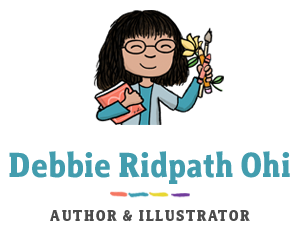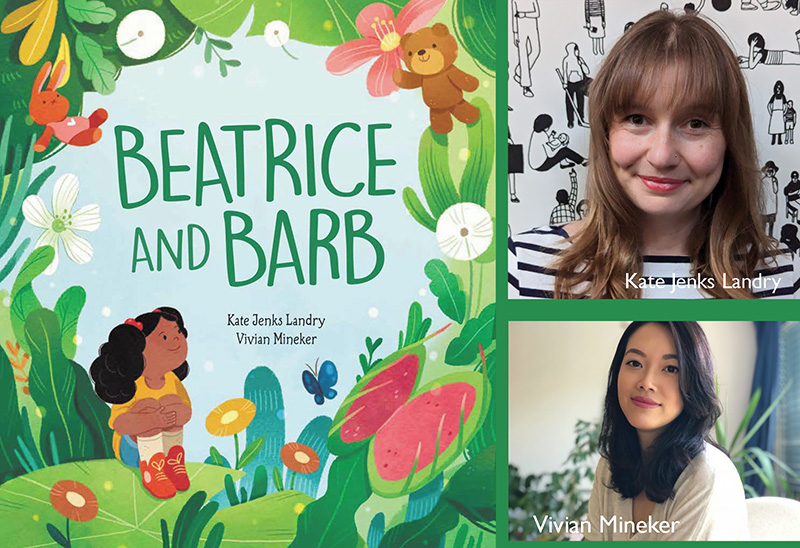
Editor’s note: It’s more of a challenge to get books noticed these days! You can help boost this book and its creators by helping to spread the word on Bluesky, X/Twitter, Instagram, Facebook, and Substack.
BEATRICE AND BARB
Author: Kate Jenks Landry ~ Illustrator: Vivian Mineker
Publisher: Kids Can Press (Oct. 3, 2023)
Audience: Grades Preschool – 2 / ages 3-7
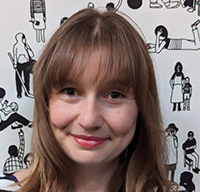
Kate Jenks Landry self-published her series, The Julia Dagons Mysteries, when she was in grade five, using the photocopier at her mom’s work. Kate lives with her partner Michael, their daughters Zoe and Mae, and a wily bernedoodle named Leo.
Her debut picture book, Beatrice and Barb, will be published with Kids Can Press in October 2023. Her second book will follow in Spring 2025. You can find out more about Kate on her website, Twitter, or Instagram.
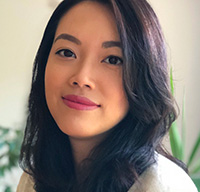
Vivian Mineker spent her formative years in Taipei and Portland, Oregon, before embarking on adventures to Slovenia and eventually settling in Amsterdam. Art has been her lifelong passion, and she’s been drawing and painting for as far back as she can remember. In college, she pursued her interest in animation, which led her to work as an animator at Nike. However, around seven years ago, she made the decision to transition into the world of illustration, embarking on an exciting new chapter in her career. You can find out more about Vivian on her website, Twitter, Instagram, and Facebook
Synopsis:
In this heartfelt story of friendship, a young girl is determined to save her most unlikely pet.
Beatrice desperately wants a pet of her own. Her mom has other ideas. No dog. No cat. No hedgehog. They finally reach a compromise, and Beatrice gets … a Venus flytrap. Being a good sport, Beatrice makes the best of things. She gives her new friend a name, Barb. She does all the things with Barb that good pet owners do, such as taking walks and playing fetch. Only now, despite all the love and care, Barb is starting to look sick, with black spots on her leaves and some parts of her turning mushy. Beatrice knows she has to find a way to save Barb. But how?
“The debut picture book from author Kate Jenks Landry offers a universal and powerful message about how to take care of those we love. It also celebrates differences, unique friendships and what makes each of us special (like how Barb needs to eat bugs to survive!). This story has strong curriculum connections to social-emotional learning and offers excellent character education lessons on caring, perseverance and responsibility. Vivian Mineker’s illustrations are imbued with the soft greens of plant life and beautifully convey the warmth and affection at the heart of the story.”
Q for Kate. How was BEATRICE AND BARB written?

From Kate: I first came up with the idea standing in my kitchen sometime around 2016. My older daughter, Zoe, was three, and she loved helping me in the kitchen while her baby sister napped. I had the idea that we would cultivate a sour dough starter as a project. We talked about how it was a living thing we had to feed and care for. Zoe named it Toot. It struck me that a kid with a pet colony of yeast named Toot might make a funny picture book.
After trying to write a draft I realized two things:
1. Few picture book readers would be familiar with the concept of a sour dough starter (this was pre-pandemic times!) and
2. Goopy beige blobs of yeasty flour paste might not make for the most dynamic illustrations. Also, I managed to kill Toot before we ever got to the bread baking stage!
But the idea a book about an unconventional pet stuck with me. I’d recently bought a bunch of houseplants, so I thought that might work. Somehow a carnivorous plant seemed more pet-like to me than a regular one, so I decided on a fly trap.
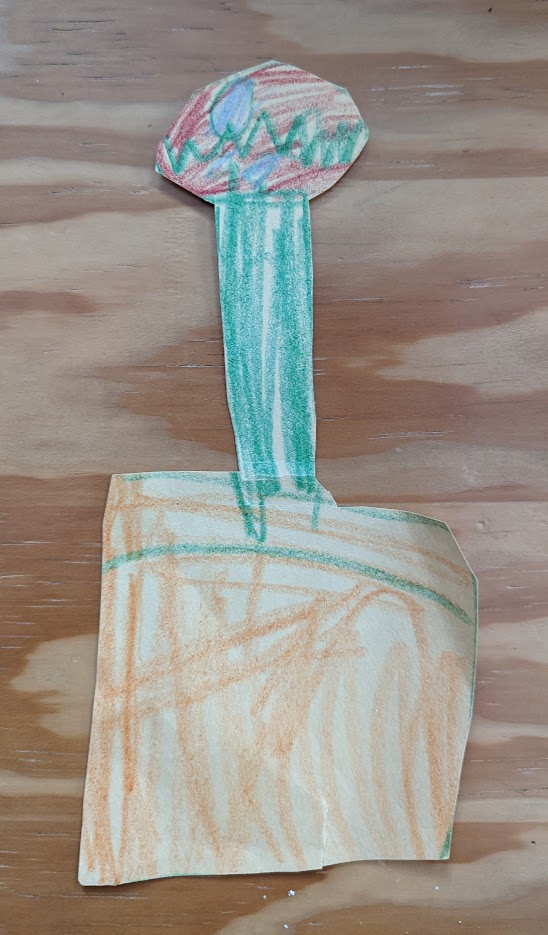
I started researching them and was immediately swept away down an internet rabbit hole. Fly traps are so cool! They are native to only to the sub-tropical wetlands of North and South Carolina, and have evolved to thrive in conditions that would kill most plants. The inside of their traps are covered in tiny trigger hairs and don’t spring closed unless at least two of the hairs are touched in a short period of time. This prevents them from closing on random, non-living debris that might have fallen in. They also only close part way initially, allowing prey that is too big or too small escape before shutting completely. They’re able to do all this despite the lack of muscles or a brain. Scientists still don’t really understand how they do it.
The earliest drafts of the story seem to have been lost. Back then, I just kept editing the same document rather than saving different drafts separately. The earliest version I can find is from 2017. It has a different name, Lucy and Joan, and is a whopping 1386 words despite only covering the first 3rd of the story!
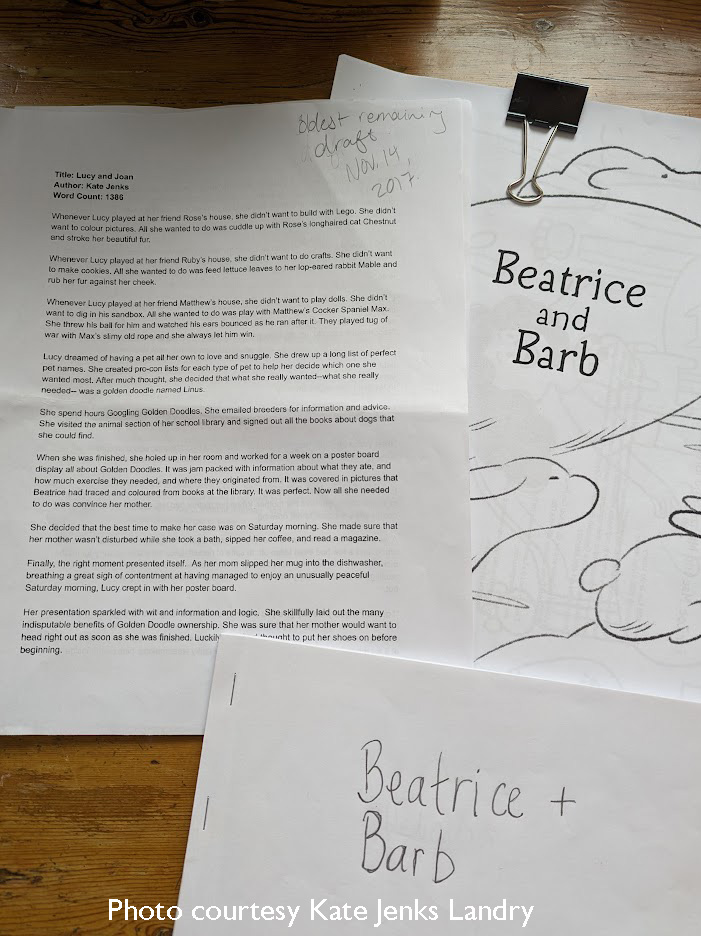
Reading it now, there is a lot a like about that proto-version — I’m actually surprised by how funny it is! — but it betrays a lack of understanding about how a picture book actually works; it’s way too long, contains too much detail, and spends an extraordinary amount of time getting to the main conflict.
My next drafts solve some of these issues but introduced a new one — the protagonist’s teacher takes her by the hand, walks her to the library, and finds her a book that magically solves the problem. In other words, Beatrice had zero agency. I happily submitted this early version of the story, sat back, and waited for offers to roll in.
Crickets.
So, how did I fix these problems? I joined a critique group! Actually, I joined two. This was the best thing I have ever done as a writer. It’s made my writing so much stronger and provided me with a source of accountability. We are also true-blue friends who cheer each other on and pick each other up when the inevitable rejections roll in.
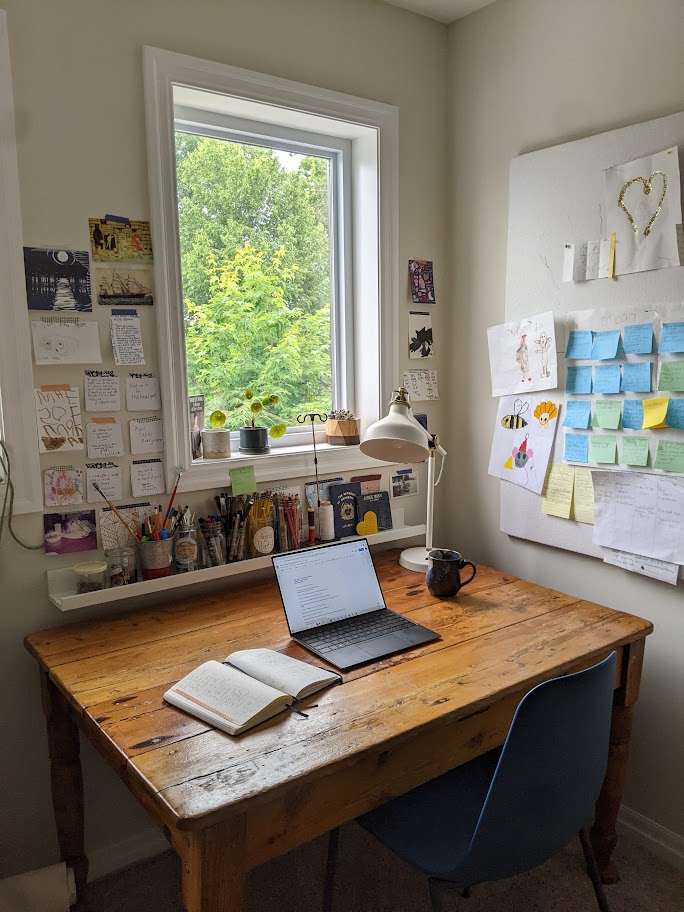
I also submitted this story to the CANSCAIP Writing For Children Competition, which I would highly recommend. Everyone who enters gets detailed feedback on their work from a publishing professional or published author, which is unbelievably valuable. During this time I also researched how to write a proper query letter.
I resent this new, improved version of my story out to the same handful of Canadian publishing houses that accept unsolicited submissions, and waited. Again, crickets. After a few months, I moved on and started submitting other stories I had written since.
In January of 2020, I got an email from the wise and wonderful Katie Scott at Kids Can Press saying she had found my story and would like to talk about the possibility of publishing it. I couldn’t believe it! Incredibly, we discovered that the version that had landed on her desk only recently was the one I had submitted three years earlier! She wanted to meet for coffee the following week in Toronto.
That meeting was such a big deal for me. For years I had lived in Toronto as a student at the University of Toronto, but by then I was a non-driving stay-at-home-mom in the suburbs who felt a million miles away from the fancy world of publishing. I was so nervous that I was sweating buckets, but as soon as Katie walked in, I knew we were a good match. We are the same age and have the same name. We sat down with our identical lattes, pulled out identical notebooks and pens, and laughed.
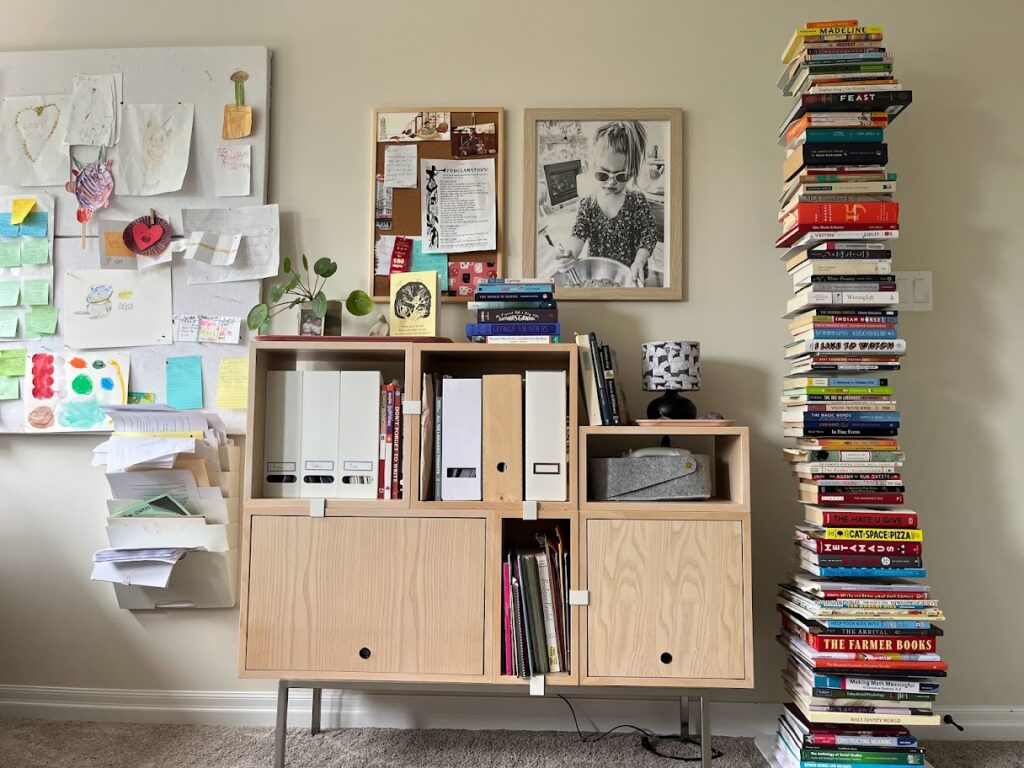
Katie sketched me a rough story map explaining her vision for the book. She explained how she wanted it to change but left it to me to figure out how to make those changes. After our meeting, I walked down the street to a different coffee shop, ordered another latte, and proceeded to write a new draft of the story. By the time I boarded the GO Train home that night, I had something that looked a lot like the finished book, at least from a structural point of view.
Over the next few weeks, Katie and I went back and forth over email, working in a Google Doc, until we had a version she felt strongly enough about to take to acquisitions. In April, she called to say an official offer was on its way.
It was the first week of lockdown. I cried.
The timing of that offer was an incredible gift. It gave me something to cling to during those long first months and years of the pandemic. I buckled down and worked harder than ever on my craft. I also plucked up all my courage and started asking other creatives if I could interview them for my blog, The Needle and The Knife, which has helped me make so many meaningful connections.
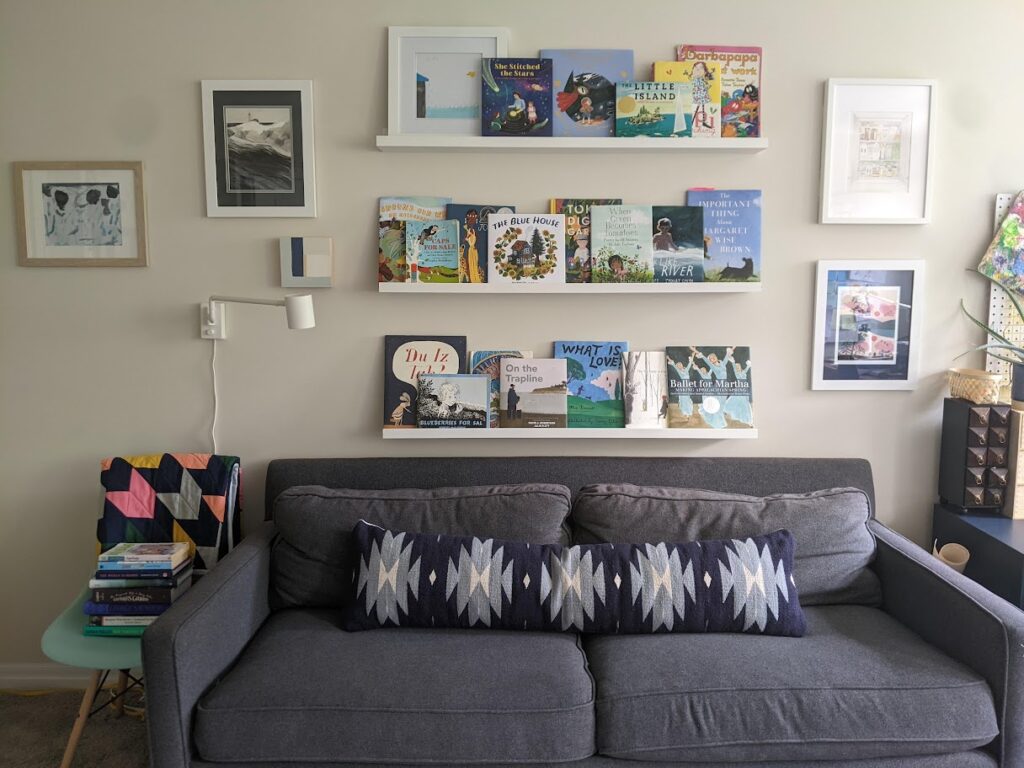
By the end of the following year, I had signed the contract for my second book with Kids Can, which will be out in 2025.
The next time I remember crying is when I received the first character sketches from the illustrator, the amazing Vivian Mineker. It can be so scary as an author to relinquish control over this thing that started out as completely yours, but if you can do it, real magic is possible.
Vivian’s work is so lush and vivid and has such heart. I love that her take on the characters included so much diversity, in terms of ethnicity but also ability and body type.

At every stage of the process, from roughs through to finished art, I fell more deeply in love. I also have to mention Barb Kelly, the book’s incredible designer, who has done such a great job bringing everything together into such a beautiful package.
Truly, this story is no longer just mine — it is also Katie’s, Barb’s, and especially Vivian’s. One day soon, it will also belong to actual readers, which is the coolest thing ever!
Q. How did you become illustrator for BEATRICE AND BARB? What was your illustration process?

Answer from Vivian: I received the manuscript of BEATRICE AND BARB from my agent, and it captivated me from the very first page. The endearing story instantly struck a chord with me, as I was also a child who wanted all kinds of pets and relentlessly pleaded with my parents. Beatrice’s story resonates deeply with me. I also loved that the story unfolds with a cast of intriguing and delightful characters. As I delved into the manuscript, vivid images of these characters formed in my mind, which is always a good sign for any new project. I became very excited and couldn’t wait to bring them to life. Kate, with her incredible skills, breathed magic into every aspect. Following the initial meeting with Barb Kelly and Katie Scott, the talented editor from Kids Can, I felt confident that we made an exceptional team and were going to be able to create a wonderful book together. Collaborating with this remarkable group of individuals has been an absolute joy throughout this entire journey.
During our initial meeting, Barb and Katie shared their vision for the book, discussing the appearance of the characters and the visual flow of the spreads. Their concise and detailed briefs proved immensely helpful, allowing us to brainstorm both the big picture and the finer details. With their approval of the colored character sketches, I proceeded to work on the spread sketches. This stage is crucial as we finalize the major elements before delving into colors. I was fortunate to receive valuable and constructive feedback from Katie and Barb, which greatly facilitated the process. Once we were all satisfied with the sketches, I dedicated a few weeks to painting the final color versions of the spreads. To accomplish this, I utilized a Cintiq tablet in conjunction with Photoshop. This particular phase holds a special place in my heart as it breathes life into the book, giving it that polished and vibrant touch.
Q. What do you hope young readers will take away from your book?

From Kate: I love that my protagonist Beatrice doesn’t waste a lot of time and energy mourning that the pet she gets is not exactly the pet she expected. Instead, she jumps whole heartedly into loving her new friend and sets off on a quest to better understand who Barb is and what she needs.
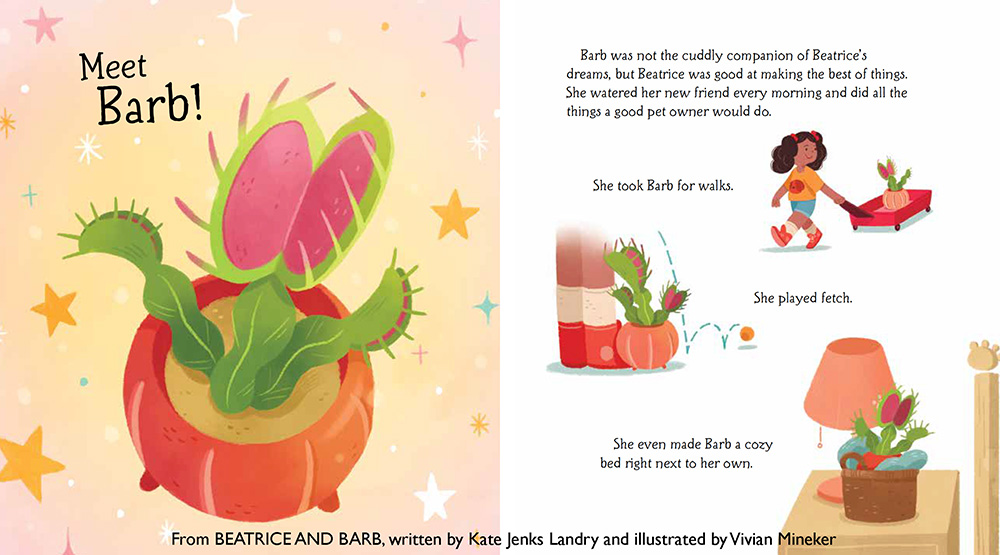
I hope young readers will take away the idea that caring for those we love — person, animal, or plant! — requires that we really see them for who they are, and not who we might wish them to be. We are not all the same, and we don’t need the same thing to thrive.

From Vivian: As an illustrator, my primary goal is to create visuals that captivate young readers and enhance their connection to the story. I want the illustrations to serve as a gateway into the narrative, drawing them in and allowing them to delve deeper into the world we’ve crafted. Moreover, I believe the story itself is incredibly endearing and relatable. It beautifully explores the themes of friendship and teaches a valuable lesson about caring for loved ones in the way they truly need, rather than based on our assumptions. At its core, it’s a heartwarming tale that imparts the wisdom of learning how to love and care for others.
Q. What advice do you have for young creators?

From Kate: I have two pieces of advice, one general and one very specific to picture book writers.
First, don’t be embarrassed about being a beginner. Being a professional creative takes guts! The sooner you can courageously call yourself a writer (or an artist, or a musician, etc) outloud to other people, the sooner you will start taking your creative practice seriously. A pre-published writer is a real writer, with real work to do. Don’t just sit around waiting for that first “yes!” from an agent or editor ;join a critique group or a professional organization, take a class, listen to podcasts interviews with creators you admire. Above all read and write as much as you possible can!
I say all this like it is easy, but it is something I struggled with for years. I actually had a pencil tattooed on my forearm as a reminder not to hide my ambitions away because I’m afraid of what people will think.
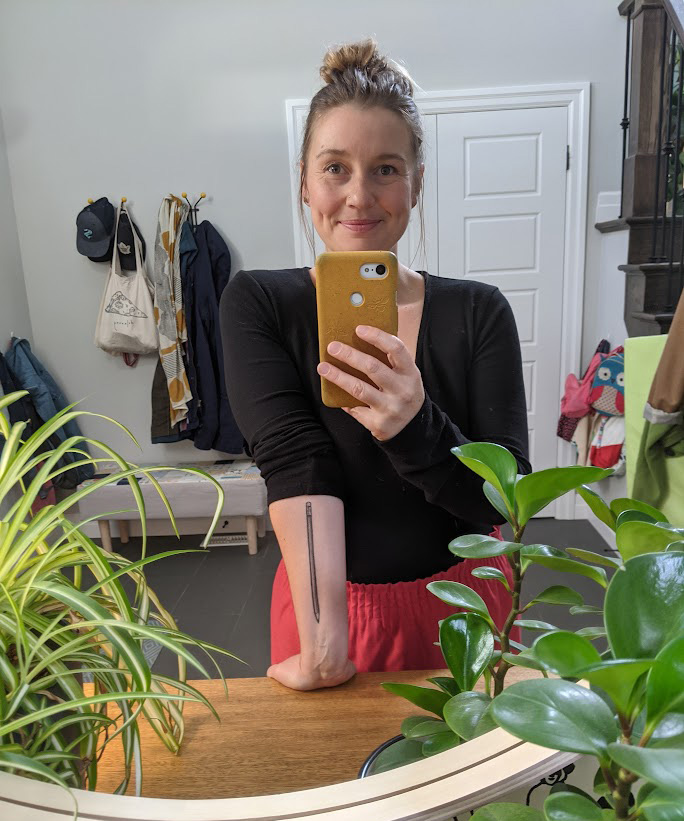
People ask me all the time why I have this giant pencil on my arm, and I have no choice but to tell them the truth — that I invented the pencil. KIDDING! I tell them that I’m a writer!
BUT. While I think it is crucial to take yourself seriously as a creative, I think it is equally important not to take your writing or art too seriously. It’s easy to get stuck because we want our work to be perfect. Relax! Experiment! I am a huge believer in the concept of PLORK, which was artist and teacher Coretta Kent’s word for play + art.
Don’t be afraid to create something terrible, or to try something a different way. I have a sign over my desk that says “They’re just words!”
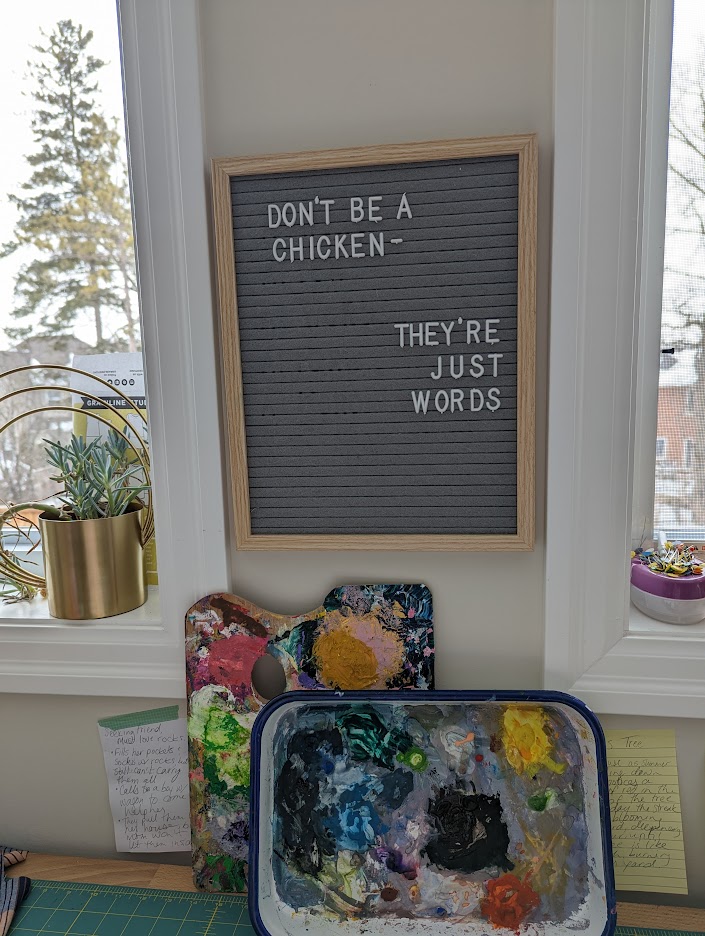
To aspiring picture book authors who are not also illustrators
I would say to remember the goal is not to write the most beautiful short story. A picture book manuscript moves and works very differently than a conventional short story. Even if you aren’t creating the art, you are still working in a visual medium. It’s worth putting time and effort into understanding what that means in terms of your craft. Follow illustrators on social media and read/listen to interviews where they talk about their work.
To be clear, the goal is not for you to start dictating what the art should be — quite the opposite! Your job is to create stories that are rich in illustrative possibility. Think about what a spread might suggest or spark in an illustrator’s mind, but then leave of space for them to take it in a direction of their choosing.
Read your draft and strip out as much visual description possible, focusing instead on other sensory description that can’t be easily shown on the page. Ask yourself if the action and settings you have included evoke dynamic, interesting images. It’s crucial to leave room for the illustrator to participate, not just in the look of the book, but in the actual storytelling and character design.
Here is a small example from Beatrice and Barb. I had added an illustration note specifying that one character, Millicent, had a long gray braid and yellow boots. Katie recommended I remove that detail. Months later, when I opened en email containing the first character sketches from Vivian, I gasped. Her version of Millicent was statuesque and androgynous, with amazing pink hair and Crocs! She was orders of magnitude cooler than anything I could have come up with on my own.
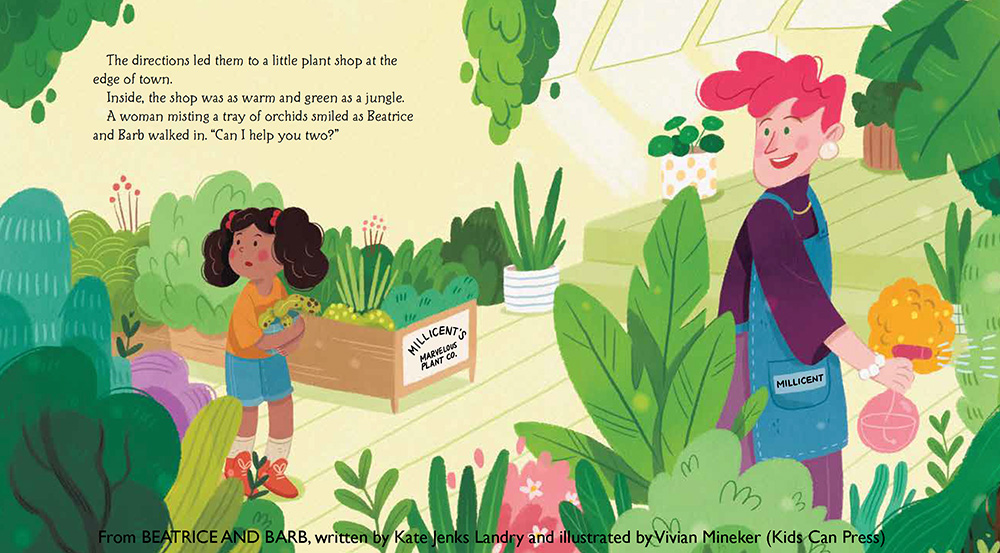

From Vivian: When I was starting out, I received all sorts of advice, but much of it seemed contradictory, which left me feeling confused and unsure about the best path to follow. As I’ve progressed in my career and embraced my identity as an artist, I’ve come to realize that the most important thing is to do what truly inspires me as an individual. Whether it’s sticking to a particular style that you love or exploring various artistic approaches, the key is to create art that brings you joy and ignites your excitement. By following your artistic instincts and drawing what genuinely makes you happy, your unique style and direction naturally emerge from your passion. There’s no need to conform or force yourself into a mold because eventually your artistic voice will find its way and be heard.
Q. What are you excited about now?

From Kate: I’m so excited to start doing classroom visits. I have a teaching background and for years have done one-on-one tutoring with young readers and writers, but I’m definitely still figuring out how to best approach author visits. I have been doing little test-runs in my own children’s classrooms. Not everything I’ve tried has worked, but that’s ok! I am learning from my failures.
I am also at work on my first graphic novel, an upper middle story tentatively called Chloe and the Door to Anywhere But Here. I love the challenge of diving deep into a brand new form, trying to figure out how it works. In some ways, writing a graphic novel is a lot like writing a picture book, but in other ways, it’s a very different beast.

As I’ve been happily struggling along with my first draft, I’ve also been reading so many great graphic novels, as well as craft books on cartooning and comics.
I have zero intention of ever illustrating my own work, but I have been trying to cultivate a daily cartooning journal, modelled on exercises from Lynda Barry’s amazing book Making Comics. This serves to keep me in a visual storytelling mind set, but it has also had the side benefit of helping me unearth cringy, long-buried memories of being an insecure grade 7 girl, many of which have made their way into the story.
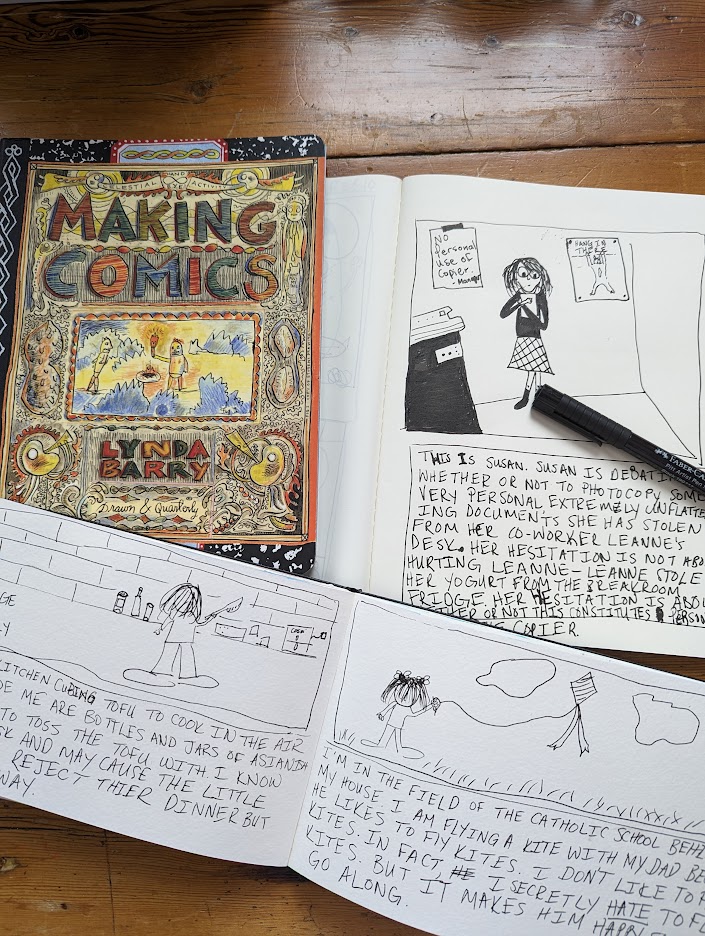

From Vivian: Apart from immersing myself in various new projects, I’m thrilled about delving deeper into my artistic style. As I mentioned earlier, it’s crucial to keep producing art that sparks inspiration and enthusiasm within me. Along this creative journey, I aim to explore new styles, directions, and visual elements that can enrich my future works and personal projects. Being an artist is an exciting adventure, as it involves an ongoing process of self-discovery and encounters with one’s own boundless creativity.
Thank you for the opportunity for me the talk about this book, it’s really such a sweet book that holds a special place in my heart. I hope the readers will get as much enjoyment out of it as I did illustrating it!
Also see other Interviews with Book Creators and Advice For Young Writers And Illustrators.

